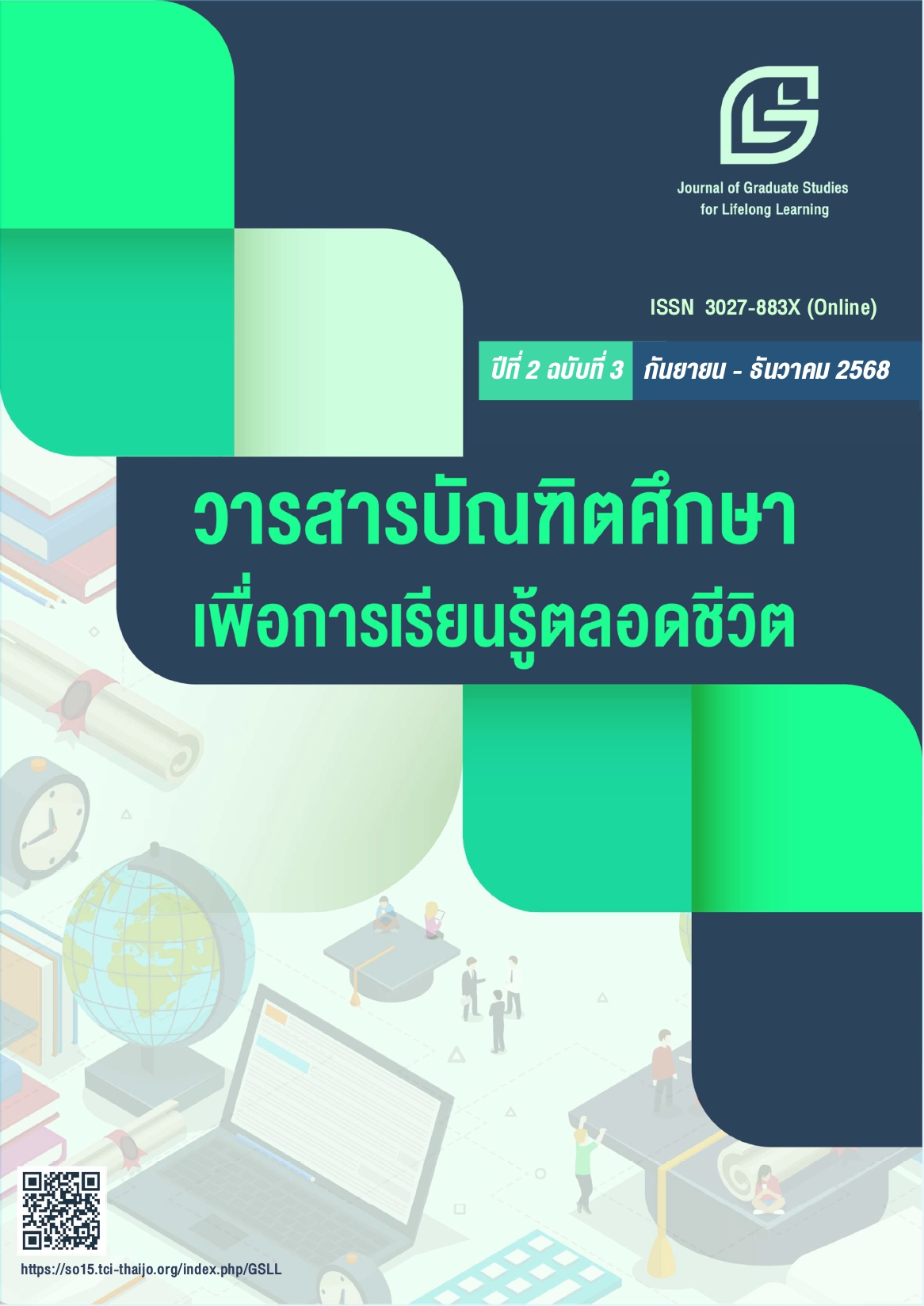รูปแบบการมีส่วนร่วมของชุมชนในการแก้ไขปัญหาการซื้อยาชุดจากร้านชำ ตำบลเจ๊ะบิลัง อำเภอเมือง จังหวัดสตูล
Main Article Content
บทคัดย่อ
การวิจัยและพัฒนานี้ มีวัตถุประสงค์เพื่อพัฒนาและประเมินประสิทธิผลของรูปแบบการมีส่วนร่วมของชุมชนในการแก้ปัญหาการซื้อยาชุดจากร้านชำ แบ่งการวิจัยเป็น 3 ระยะ คือ 1) สภาพปัญหาการซื้อยาชุดจากร้านชำ 2) พัฒนารูปแบบการมีส่วนร่วมของชุมชนในการแก้ปัญหาการซื้อยาชุดจากร้านชำ 3) ประเมินประสิทธิผลรูปแบบ กลุ่มตัวอย่างเป็นผู้มีส่วนได้ส่วนเสีย 21 คน ประชาชนที่ซื้อยาชุดจากร้านชำ 63 คน และผู้ประกอบการร้านชำ 22 คน เครื่องมือที่ใช้เป็นแบบสอบถาม วิเคราะห์ข้อมูลด้วยสถิติเชิงพรรณนา และสถิติ paired t-test
ผลการวิจัย 1) สภาพปัญหาการซื้อยาชุดจากร้านชำ พบว่า ประชาชนมีความรู้เกี่ยวกับโทษและอันตรายจากยาชุดระดับปานกลาง ร้อยละ 55.60 พฤติกรรมเกี่ยวกับการซื้อยา ระดับน้อย ร้อยละ 52.38 ร้อยละ 58.73 และพบว่า ร้านชำมีการจำหน่ายยาสามัญประจำบ้านร้อยละ 72.27 จำหน่ายยาอันตรายร้อยละ 22.72 จำหน่ายผลิตภัณฑ์สมุนไพรที่ไม่มีทะเบียนและยาหมดอายุหรือยาเสื่อมคุณภาพ 4.50 2) ผลการพัฒนาทำให้ประชาชน มีรูปแบบการมีส่วนร่วมของชุมชนในการแก้ปัญหาการซื้อยาชุดจากร้านชำ มีความเหมาะสม และประชาชนมีส่วนร่วมดำเนินการทุกขั้นตอน มีมาตรการทางสังคมในการแก้ปัญหาการซื้อยาชุดจากร้านชำ ประชาชน ผู้ประกอบการ สามารถเข้าถึงข้อมูลได้หลากหลายช่องทาง และได้รับข่าวสารที่ถูกต้องมากยิ่งขึ้น และ 3) การประเมินประสิทธิผลรูปแบบในประชาชน พบว่า ความรู้ พฤติกรรมและความพึงพอใจต่อรูปแบบการแก้ปัญหาการซื้อยาชุดจากร้านชำ หลังทดลองสูงกว่าก่อนทดลองอย่างมีนัยสำคัญทางสถิติ (p<0.05) และ ร้านชำจำหน่ายยาสามัญประจำบ้าน ก่อนพัฒนา ร้อยละ 72.27 หลังพัฒนา ร้อยละ 95.50 จำหน่ายผลิตภัณฑ์สมุนไพรที่ไม่มีทะเบียนและยาหมดอายุ ก่อนพัฒนา ร้อยละ 4.50 หลังพัฒนาไม่พบจำหน่าย
ข้อค้นพบจากการวิจัยควรนำรูปแบบไปประยุกต์ในพื้นที่อื่น ๆ ที่มีปัญหาเช่นเดียวกัน และควรมีการสนับสนุนสื่อความรู้ โดยนำเทคโนโลยีใหม่ ๆ มาประยุกต์ใช้ ในการส่งเสริมการเรียนรู้อย่างต่อเนื่อง เพื่อให้ประชาชนมีความรู้และมีพฤติกรมการใช้ยาอย่างปลอดภัยมากยิ่งขึ้น
Article Details

อนุญาตภายใต้เงื่อนไข Creative Commons Attribution-NonCommercial-NoDerivatives 4.0 International License.
เอกสารอ้างอิง
กัณฐนวรรธน์ รอนณรงค์. (2564). ผลการดำเนินงานและพัฒนาแนวทางการส่งเสริมการใช้ยาอย่างสมเหตุ สมผลระดับจังหวัดของคณะกรรมการพัฒนาระบบบริการให้มีการใช้ยาอย่างสมเหตุผล จังหวัดชัยภูมิ. ชัยภูมิเวชสาร, 41(1), 58-67. https://thaidj.org/index.php/CMJ/article/view/9903/9153
กุสุมา กังหลี. (2561). ปัจจัยทำนายพฤติกรรมการใช้ยาในผู้ป่วยเบาหวานชนิดที่ 2 โรงพยาบาลพระมงกุฎเกล้า. วารสารพยาบาลทหารบก, 19(2), 170-182. https://he01.tci-thaijo.org/index.php/JRTAN/article/view/143997/106532
ช่อทิพย์ จันทรา และจินดา ม่วงแก่น. (2563, กรกฎาคม 17). การศึกษาสาเหตุการนำยาเหลือใช้มาคืนของผู้ป่วยสูงอายุโรคเรื้อรังที่มับบริการ ณ ศูนย์สุขภาพชุมชนร่วมใจ อำเภอวังทอง [Paper]. การประชุมหาดใหญ่วิชาการระดับชาติและนานาชาติ ครั้งที่ 11, มหาวิทยาลัยหาดใหญ่.
ช่อผกา, นาคมิตร. (2563). ความชุก ความรู้ ทัศนคติ และพฤติกรรมการใช้ยาปฏิชีวนะอย่างสมเหตุผลและผลิตภัณฑ์สุขภาพกลุ่มเสี่ยงปลอมปนสเตียรอยด์ในกลุ่มผู้สูงอายุจังหวัดสุราษฎร์ธานี. Thai Journal of Pharmaceutical Sciences, 15(2), 81-94. https://li01.tci-thaijo.org/index.php/TBPS/article/view/240196/169656
ดวงทิพย์ อรัญดร, สรียา แซ่ลิ่ม, สิรินทิพย์ วิชญวรนันท์, อภิณัฐ คล้ายสถิต และสุกัญญา เดชอดิศัย. (2553). การศึกษาการปนปลอมของสารสเตียรอยด์ เพรดนิโซโลนและเด็กซ่าเมทธาโซนในยาแผนโบราณ ในอำเภอหาดใหญ่ จังหวัดสงขลา. วารสารมหาวิทยาลัยทักษิณ, 13(1), 20-30. https://ph02.tci-thaijo.org/index.php/tsujournal/article/view/68524/55794
ธนพงศ์ ภูผาลี, สมศักดิ์ อาภาศรีทองสกุล, วิษณุ ยิ่งยอด, ตฤณ แสงสุวรรณ และลัดดา อำมาตย์. (2557). รูปแบบการพัฒนาร้านชำแบบชุมชนมีส่วนร่วม ต.โพนสูง อ.สกุลนคร. วารสารอาหารและยา, 21(3), 57-63. https://he01.tci-thaijo.org/index.php/fdajournal/article/view/139069/103291
ธนพัฒน์ ชัยะโสตถิ, วรรณคล เชื้อมงคล, อัษฎางค์ สำเร็จ และจันทร์พิมพ์ ตรวิทยาคม. (2557). การทดสอบเบื้องต้นของการปลอมปนสเตียรอยด์ในยาผง ยาลูกกลอน ยาเม็ด ยาน้ำ และยาแคปซูล ในชุมชนกรุงเทพมหานคร. ไทยเภสัชศาสตร์และวิทยาการสุขภาพ, 9(4), 151-156. https://ejournals.swu.ac.th/index.php/pharm/article/view/5059/4818
นวเรศ เหลืองใส และชิดชนก เรือนก้อน. (2562). ผลการพัฒนาศักยภาพของอาสาสมัครสาธารณสุขประจำหมู่บ้านในเรื่องร้านชำคุณภาพซึ่งปลอดยาห้ามจำหน่าย. วารสารเภสัชกรรมไทย, 11(3), 638-647. https://he01.tci-thaijo.org/index.php/TJPP/article/view/182937/129309
นิสามณี สัตยาบัน, พรพิมล อนันต์เนติกุล และมันตา พาแพง. (2562). ความรู้และการปฏิบัติตัวเกี่ยวกับการใช้ยาสามัญประจำบ้านแผนปัจจุบันของนักเรียนมัธยมศึกษาปีที่ 5. วารสารวิชาการมหาวิทยาลัยอีสเทิร์นเอเชีย, 13(3), 188-199. https://he01.tci-thaijo.org/index.php/EAUHJSci/article/view/231784/158148
บุญชม ศรีสะอาด. (2549). การวิจัยเพื่อแก้ปัญหาและพัฒนาผู้เรียน. สวีริยาสาส์น.
บุญเชิด ภิญโญอนันตพงษ์. (2545). การวัดประเมินการเรียนรู้. คณะศึกษาศาสตร์ มหาวิทยาลัยศรีนครินทรวิโรฒ.
ปรีชา อินรัสพงศ์. (2565). ความรู้ ทัศนคติ และพฤติกรรมในการใช้ยาปฏิชีวนะของประชาชนที่มารับบริการแผนกผู้ป่วยนอกโรงพยาบาลศรีรัตนะ อำเภอศรีรัตนะ จังหวัดศรีสะเกษ. วารสารการคุ้มครองผู้บริโภคด้านสุขภาพ (Online), 2(1), 62-70. https://he02.tci-thaijo.org/index.php/JOHCP/article/view/255444/175492
พัชราพรรณ กิจพันธ์ และจันทรรัตน์ สิทธิวรนันท์. (2561). วิกฤตเชื้อดื้อยาสู่การใช้ยาอย่างสมเหตุผล. วารสารอาหารและยา, 25(2), 11-14. https://he01.tci-thaijo.org/index.php/fdajournal/article/view/140318/104087
เพิ่มพรรณ์ ธนะภาส, อัจฉรียา ฟองศรี, กฐิน สมบูรณ์ และประดิตร ปะนะรัตน์. (2563). การจัดการปัญหาความไม่ปลอดภัยด้านยาและผลิตภัณฑ์สุขภาพของผู้ป่วยโรคเบาหวาน และความดันโลหิตสูงในเขตคลินิกชุมชนวัดใหม่ทุ่งคา อำเภอรัตภูมิ จังหวัดสงขลา. วารสารเภสัชกรรมไทย, 12(1), 250-258. https://he01.tci-thaijo.org/index.php/TJPP/article/view/208175/153144
มะลิสา บุญรัตน์. (2557). พฤติกรรมการซื้อยาจากร้านขายยาของประชาชนในจังหวัดสงขลา. วารสารวิชาการมหาวิทยาลัยราชภัฏภูเก็ต, 10(1), 22-45. https://nuir.lib.nu.ac.th/dspace/bitstream/123456789/3938/3/62060453.pdf
รุ่งทิพย์ ทิศแดง และสุพัฒน์ จำปาหวาย. (2562). พฤติกรรมการใช้ยาชุดและปัจจัยที่เกี่ยวข้องกับการใช้ยาชุด ของประชาชน ตำบลเปือยใหญ่ อำเภอโนนศิลา จังหวัดขอนแก่น. วารสารวิทยาศาสตร์สุขภาพและการสาธารณสุขชุมชน, 2(2), 87-95. https://he01.tci-thaijo.org/index.php/jhscph/article/view/241747/164402
สิริลักษณ์ รื่นรวย. (2563). การจัดการปัญหายาและผลิตภัณฑ์สุขภาพในชุมชนโดยเครือข่าย บวร.ร. วารสารเภสัชกรรมไทย, 12(3), 855-868. https://he01.tci-thaijo.org/index.php/TJPP/article/view/223859/163666
สุขสันต์ สุขสงคราม. (2564). แนวคิดการบริหารแบบวงจรคุณภาพ (PDCA) กับการบริหารแบบพระพุทธศาสนา. วารสารธรรมวัตร, 2(1), 39-49. https://so09.tci-thaijo.org/index.php/tmwj/article/view/637/233
เสาวณีย์ ลาเสือ, ปรวุฒิ เมืองอู่ และกนิพันธุ์ ปานณรงค์. (2560). ความรู้และพฤติกรรมการบริโภคยาชุดของประชากรบ้านโพธิ์ ตำบลโพธิ์ อำเภอเมือง จังหวัดศรีสะเกษ. วารสารวิชาการเฉลิมกาญจนา, 4(2), 70-76. https://so19.tci-thaijo.org/index.php/cnujournal/issue/view/19/19
อัจฉรา มีดวง และสมศักดิ์ อาภาศรีทองสกุล. (2564). การพัฒนากระบวนการแก้ปัญหาการใช้ยาชุดในชุมชนโดยสภาองค์กรชุมชนตำบลบ้านกู่ อำเภอสีสุราช จังหวัดมหาสารคาม. วารสารเภสัชกรรมไทย, 14(1), 70-85. https://he01.tci-thaijo.org/index.php/TJPP/article/view/248277/168851
อัจฉรีย์ สีหา และวรรณภา ศักดิ์ศิริ. (2565). การพัฒนารูปแบบการเฝ้าระวังความปลอดภัยด้านยาในร้านชำเขตอำเภอกมลาไสย จังหวัดกาฬสินธุ์. วารสารวิจัยและพัฒนาระบบสุขภาพ, 15(1), 304-317. https://he02.tci-thaijo.org/index.php/RDHSJ/article/view/255517/175506
Best, J. W. (1970). Research in education. Allyn and Bacon.
Deming, W. E. (1982). Out of the Crisis. MIT PreSS (MA).


